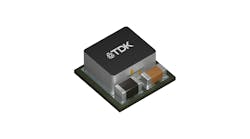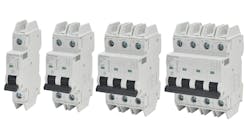How duplicating designs can build obsolescence and cost in to control systems
As designers, we tend to try and make things as easy on ourselves as possible. One way to do this is to re-use designs when we find a good one. While good, in theory, we can quickly find ourselves behind the times because technology moves along at a pace far quicker than our cognitive processes generally do. What might seem to be a trick to get more life out of a design may unwittingly force us to build obsolescence or cost into our creations.
One such example is the use of fuses for branch circuit protection. For years I have used a terminal style fuse block to protect things such as my PLC, HMI, power supply and other control circuits. While this has been a conventional part of control design for many years, there are better ways to make this work. A circuit breaker, for example, can do just as good of a job, but the added benefit is not going to go to the parts room to pull out a box of fuses when something shorts out in your circuit. Let’s face it, who doesn’t start the troubleshooting by putting another fuse in the holder and throwing the switch again? For that reason, we don’t just get one fuse; we get a pack of five. How many of us take the other four fuses back when we are done troubleshooting? It might seem like an inconsequential matter, but what if we were to add up the cost of each of those little glass fuses that end up in the bottom of an enclosure or in our pocket to be taken home and thrown out when they sit on the dresser for a few months?
In the past couple of years, some terminal block vendors have started offering supplementary protectors with reset that are not much wider than a 5-mm terminal block. By adding a couple of spacers, designed specifically for this purpose, between adjacent terminal blocks, multiple supplementary protectors can be grouped on a terminal rail. All of this at a price that is less than the investment in fuse block holders. The added bonus, if it isn’t clear from my commentary, is that you never buy another fuse for that control system ever again. Plus, the mechanic or electrician will never again have to walk down to the parts room to get another fuse. Less downtime equals more profits.
Another great saver is that light flashing in your eye on any production floor. Years ago, machine vendors started using light stacks as a means of providing visual indication of the operational status of production equipment. The same concept was used for indicator lights, push buttons and selector switches on operator control stations. The vendors of these widely used devices were quick to catch on to the notion that not every control system uses the same control voltage, so light modules were designed for a variety of voltages including 120 Vac, 48 Vac, 24 Vac, 60 Vdc, 48 Vdc, 24 Vdc and others. Some were even hybrids using a 120 Vac base but converting the voltage for the incandescent bulb down to some nominally lower voltage. The ever-advancing passage of technology has filled bins upon bins in our parts rooms with bulbs of the various voltages and wattages to accompany the light stacks and indicators on our equipment designs. How many times have you gone to the parts room to get a new bulb for a burnt-out one only to find out that you should have had an ac bulb—after you put it in the socket and burnt out the filament the first time it turned on? Or walked back to the line to install the bulb only to notice that you’ve grabbed a 24-Vdc bulb to put in a 24-Vac circuit? Same scenario as the fuse story above: wrong bulb in pocket or bottom of control enclosure, new one burnt out repeatedly before getting the right one or, worse, not replacing the bulb because we got tired of walking back to the parts room.
In the last year or so, residential and controls needs have met over the concept of lighting with the widespread use of LED technology. The wonderful bonus of LED lighting is it doesn’t burn out. These little light emitting diodes will happily do their jobs for years and years before being so dim that they aren’t effective any more. Light-stack manufacturers have figured out that if you put multiple LEDs in the same confined space, then you can get an incredible amount of lumens out of a small package. There is the option to still have a traditional light stack, using LED modules instead of incandescent bulbs, but one can even purchase a multi-indicator where the various colors of light are encased in the same enclosure. While these combo-modules are not as effective if you have to indicate multiple lights at the same time, they do provide an extremely compact method of indicating the status of a machine or process. At $100 or so per light stack, it isn’t very hard to realize the return on investment by changing out the conventional light stack, which uses incandescent light bulbs that need replacing frequently, for the LED version that is service-free for years to come. Your process or operation becomes more efficient because the plant-floor visual indicator stays operative without tying up resources to constantly replace bulbs. Ask your parts-room people how they would feel about eliminating the 15 or 20 bins that they constantly have to inventory and stock to keep your indicating lights in operation.
Finally, another area that is often overlooked is the modern practice of using quick-connect devices in our controls designs, especially sensors. Technology moves along at a good pace these days, and the use of a quick-connect device can save money over and over again as we encounter new and more innovative products that have to be handled by our machines and processes. I encountered just such an opportunity recently when we were recommissioning a packaging machine that had just completed a mechanical rebuild. As we often do, we used the downtime to provide a bit of an electrical enhancement, replacing an old operator control station that still used an Allen-Bradley DL30, single-line, digital-message display with a new control station that incorporated a graphic display screen for both control and diagnostic display. The overall investment of a little more than $2,000 for the new operator station has proven to give us 5-10% in additional uptime by correctly identifying the source of downtime events and providing appropriate prompts on the screen to help the user get the machine back in production. We pre-made several of these upgrade kits so that we can jump into one of these mechanical rebuilds and get value added for that scheduled downtime activity.
During the course of the two-day electrical upgrade, we took the opportunity to change out some older sensor technologies and provide them with quick disconnects instead of hardwired cables. We even managed to get a proper Category 3 safety circuit on the 21 guard doors that make up the guarding on this particular piece of equipment. All of this would not have been possible in a two-day window had it not have been for the prevalent use of quick-connect devices. While one fabricator made his way around the machine mounting the new sensors and guard-door switches, our electrician followed around behind him, quickly connecting all the new devices to the existing control enclosure. A single electrical enclosure penetration, for an M12 bulkhead, tied all 21 door switches into the safety relay. A properly cinched-up strain relief restored the NEMA 12 panel rating with the comforting knowledge that those cables weren’t likely to ever need to be replaced because the sensors connected were quick-connect devices.
The lesson to be learned here is we don’t have to wait for a new design to take advantage of the advancement in technology. By periodically taking a look at what is out there in the marketplace, we can keep our older equipment in good running order and also give us new methods to incorporate in our latest design efforts. Our parts room was a little anxious as we worked our way through the various light stack options but now that we have settled on a standard for our operations, the shelf space that has opened up has been a great benefit to them. The separation of sensor from cord has reduced the need to carry so many different makes and models of sensors and significantly cut down on the expense of a built-in cord in each of our sensors. Not having to keep more than 20 bins of different incandescent bulbs and the light modules that go with them has made the job of scheduled maintenance that much easier by not having to constantly maintain these important signal devices. All in all, the little things are adding up to better profits by reducing the need for inventory.






